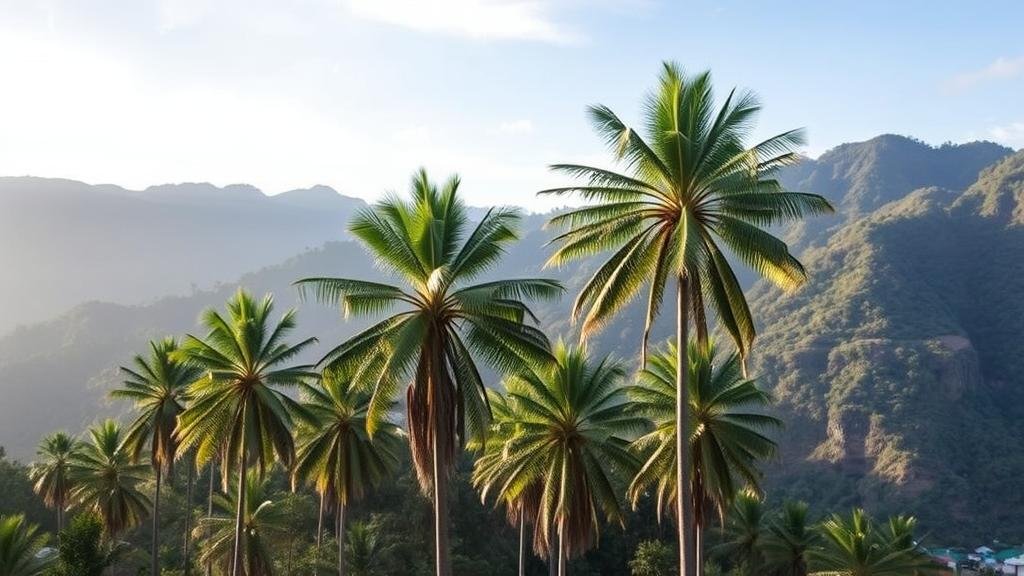Exploring the towering palm trees of Colombia’s Cocora Valley.
Exploring the Towering Palm Trees of Colombia’s Cocora Valley
Nestled within the stunning mountainous region of QuindÃo, Colombia, the Cocora Valley is home to some of the highest palm trees in the world, the Ceroxylon quindiuense, commonly known as the QuindÃo wax palm. Towering up to 60 meters (nearly 200 feet) high, these iconic palms shape the landscape of the valley and create an awe-inspiring sight that attracts nature lovers and adventurers from around the globe.
A Unique Ecosystem
The Cocora Valley is part of the Los Nevados National Natural Park, a UNESCO World Heritage Site, characterized by its unique blend of temperate and tropical climates. This ecological diversity creates an environment ideal for various flora and fauna. wax palms, which are Colombia’s national tree, thrive in this rich ecosystem, often appearing in lush, green pastures amidst misty mountain backdrops.
Historical Significance
Historically, the Cocora Valley has been an important site for the QuindÃo region’s coffee production. The wax palms are not only beautiful; they also have deep cultural significance. Legend has it that the palms were once used by ancient indigenous tribes for medicinal purposes, and today they represent natural heritage. Many visitors come to learn about the importance of these trees in local culture and their role in the ecosystem.
Visiting the Cocora Valley
The Cocora Valley can be easily accessed from Salento, a quaint town known for its colorful architecture and vibrant coffee culture. Tourists typically choose to visit between December and March, when the weather is relatively dry, making it an ideal time for hiking and outdoor activities.
Several walking trails wind through the valley, offering everything from leisurely strolls to challenging hikes. To enhance your experience, consider the following options:
- Cocora Valley Loop: A popular five-hour hiking loop that allows you to meet the palms up close and enjoy panoramic views of the surrounding mountains.
- Horseback Riding: An alternative way to explore the valley, allowing visitors to delve deeper into the landscape and connect with local ranchers.
Conservation Efforts
Despite their grandeur, the wax palms face threats from deforestation and climate change. Conservation efforts are critical to preserving this species and its habitat. Organizations like Cormacarena (the Corporation for Sustainable Development of the Coffee Region) are working tireless to promote reforestation and sustainable practices within the valley.
Visitors can contribute to these efforts by participating in eco-friendly tours, purchasing local handicrafts, and supporting conservation programs. The ongoing dialogue about preservation not only helps the environment but also enhances the cultural experience for tourists.
Real-World Applications: Embracing Nature Tourism
The Cocora Valley exemplifies how eco-tourism can benefit local communities while preserving nature. By attracting tourists interested in the spectacular palm trees and the surrounding biodiversity, the region fosters economic development. In fact, eco-tourism accounted for approximately $600 billion in global revenues in 2019, underscoring the economic potential of natural attractions.
Actionable Takeaways
As you plan your visit to Colombia’s Cocora Valley, consider the following actionable takeaways:
- Schedule your visit between December and March for optimal hiking conditions.
- Engage in guided tours that emphasize conservation and educate visitors on the regions ecosystem.
- Support local artisans and environmentally friendly practices as part of your travel experience.
To wrap up, the towering palm trees of Cocora Valley not only create a spectacular visual experience but also represent a vital part of Colombia’s natural heritage. With rich history, stunning landscapes, and ongoing conservation efforts, it offers a unique opportunity for education and adventure in one of South America’s most beautiful settings.



